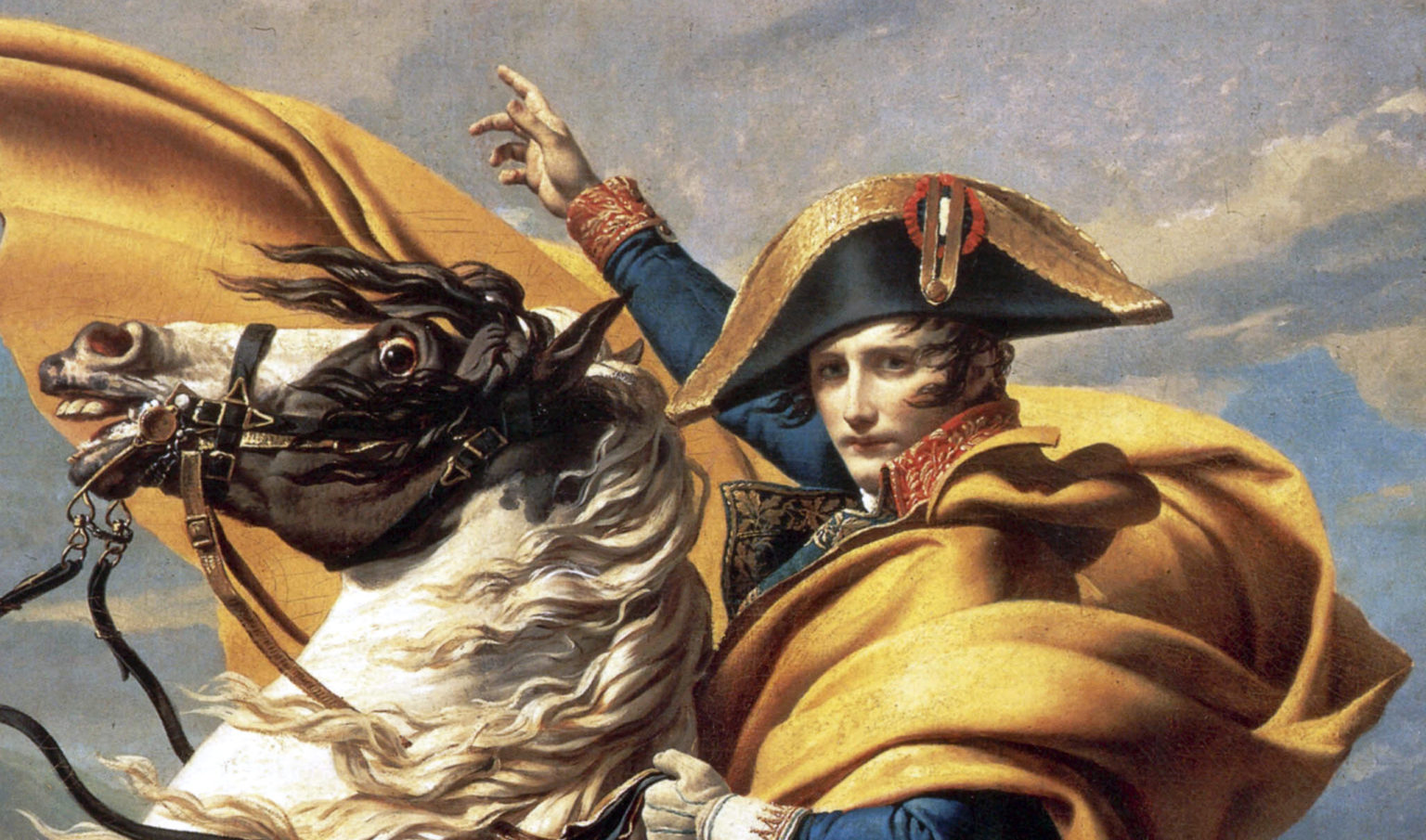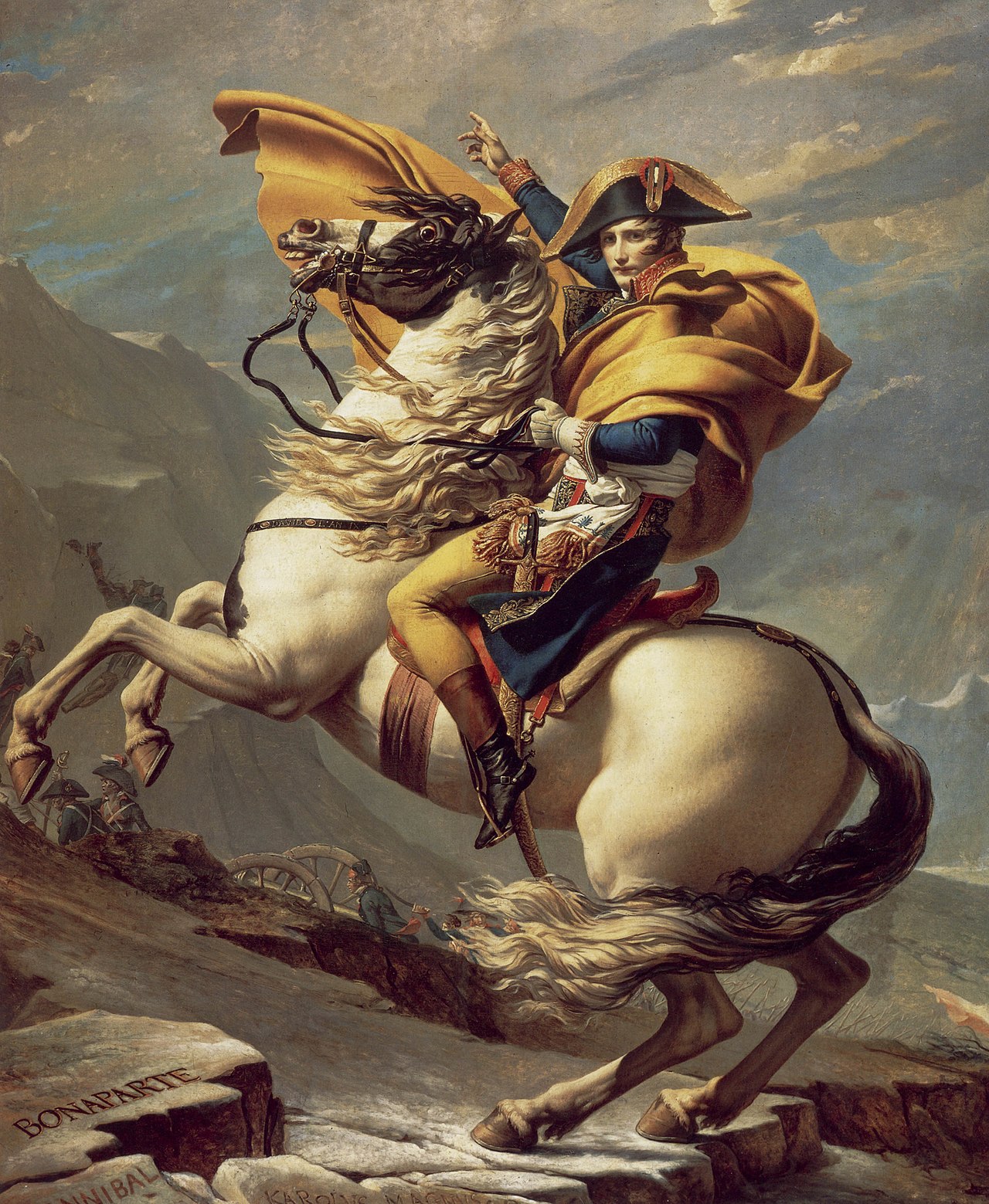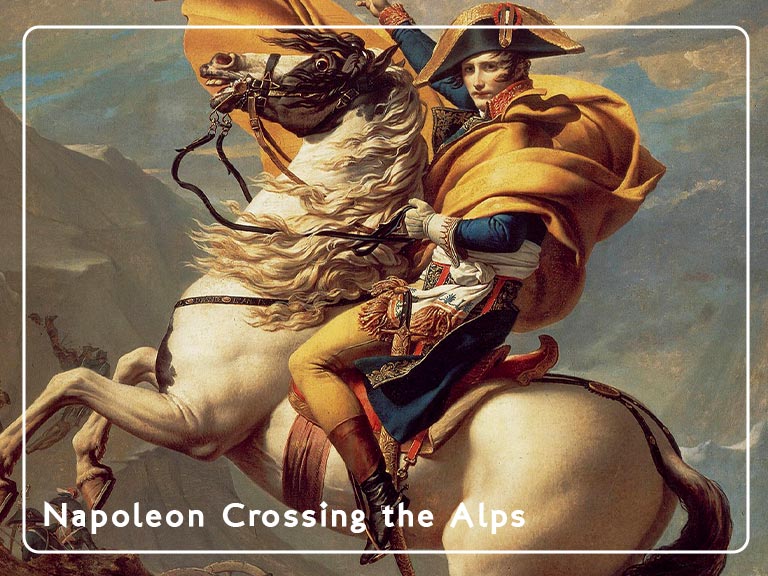Napoleon Crossing the Alps is one of the most iconic and celebrated artworks of all time. Painted by French artist Jacques-Louis David in 1801, the artwork depicts Napoleon Bonaparte on horseback, leading his army across the Alps. The painting is known for its dramatic composition, use of light and shadow, and striking depiction of the military leader.

Jacques-Louis David: The Artist Behind the Painting
Jacques-Louis David was a prominent French painter in the late 18th and early 19th centuries. He is best known for his Neoclassical style, which was characterised by its use of simple lines, clear forms, and dramatic lighting. David was also known for his political beliefs and was a strong supporter of the French Revolution.
David was commissioned to paint Napoleon Crossing the Alps in 1800, just one year after Napoleon led his army across the Alps to invade Italy. The painting was intended to commemorate this historic event and celebrate Napoleon’s military prowess.
To create Napoleon Crossing the Alps, David used a combination of historical research, artistic skill, and creative imagination. He spent months studying the geography and landscape of the Alps and even made a trip to the region to gather visual references.
David also spent time with Napoleon himself, studying his features and body language in order to accurately depict him in the painting. The result is a portrait that captures Napoleon’s commanding presence and confident demeanor.
In terms of the painting technique, David used a combination of oil paint and glazing to create the dramatic effect of light and shadow. He used a limited color palette, focusing on blues, grays, and browns, to create a sense of depth and atmosphere.
The painting is also notable for its composition, which is highly dynamic and dramatic. David used diagonal lines and strong contrasts to create a sense of movement and energy, as if the viewer is witnessing the army’s journey across the Alps in real time.

Napoleon Crossing the Alps was originally painted on a canvas that measures 260 x 221 cm, and is currently on display at the Chateau de Malmaison in France. It has been hailed as one of the greatest paintings of all time, and has inspired countless artists in the centuries since it was painted.
For other artists, Napoleon Crossing the Alps serves as an inspiration to push the boundaries of their own creativity and create works that are both visually striking and emotionally resonant. It is a reminder that great art is not only about technical proficiency, but also about creativity and innovation.
One lesson that can be taken from David’s work is the importance of research and preparation. Before starting a project, it is important to spend time gathering visual references, studying the subject matter, and considering the emotional impact of the artwork.
Another lesson is the importance of composition and visual storytelling. The composition of a painting is just as important as the technical skill used to create it. A well-crafted composition can create a sense of movement, drama, and emotional impact that draws the viewer into the artwork.
Napoleon Crossing the Alps is also a reminder of the power of art to capture history and commemorate important events. Whether through historical paintings, political commentary, or personal expression, art has the power to capture the spirit of a moment and preserve it for future generations.
The painting has also been reproduced and referenced in various forms of media, including films, books, and even advertisements. It has become a symbol of Napoleon’s power and influence, as well as an enduring example of artistic excellence.
In conclusion, Napoleon Crossing the Alps is a masterpiece of Neoclassical painting and a testament to the skill and creativity of Jacques-Louis David. It is a painting that captures the spirit of a moment in history and commemorates the military prowess of a great leader.
If you would like to receive a roundup of all of our blog posts once a week to keep you inspired in your inbox, why not sign up to our newsletter. You can access our sign up at the top of our page. If you are a London Art College student and you would like your artwork featured here, drop us a line at any time.

